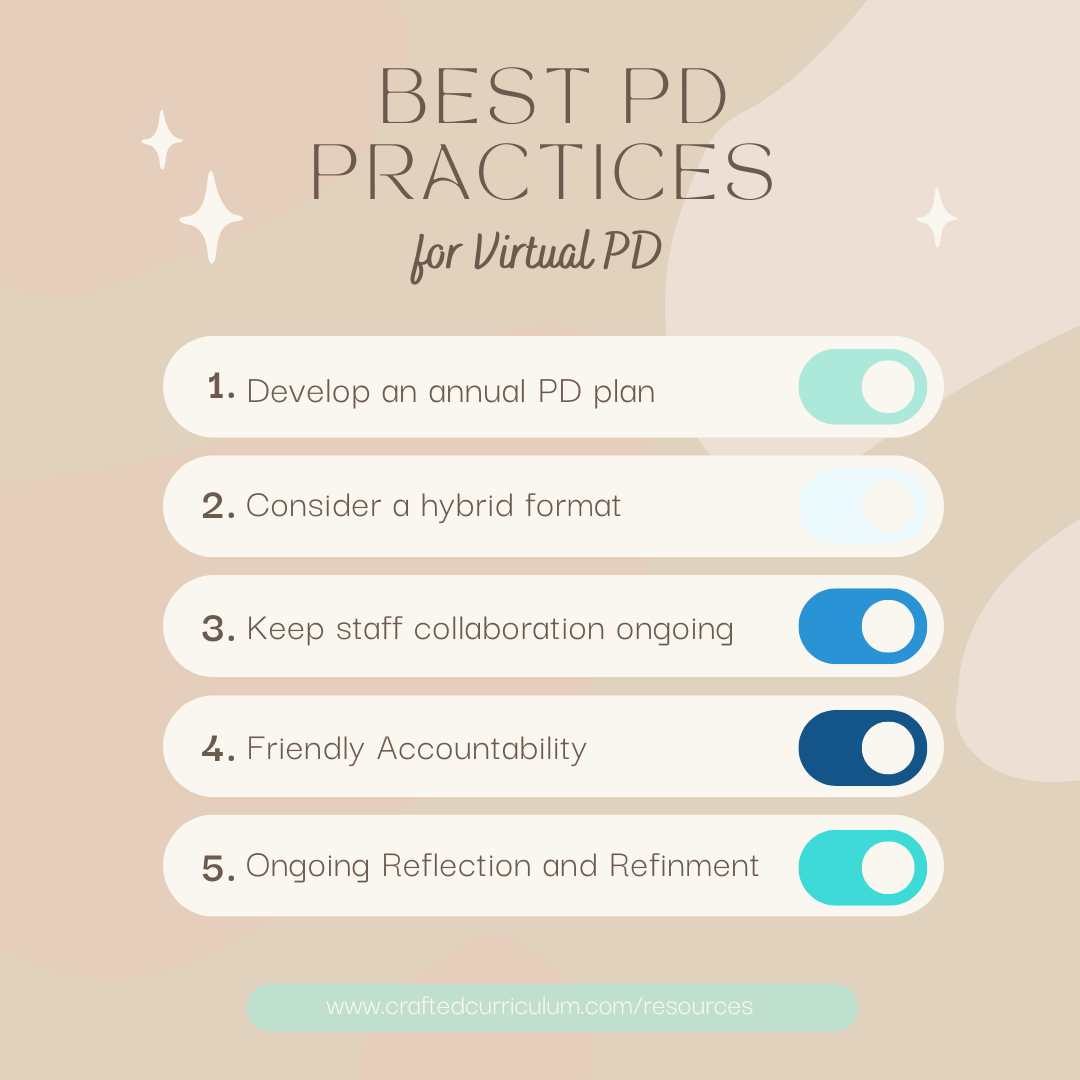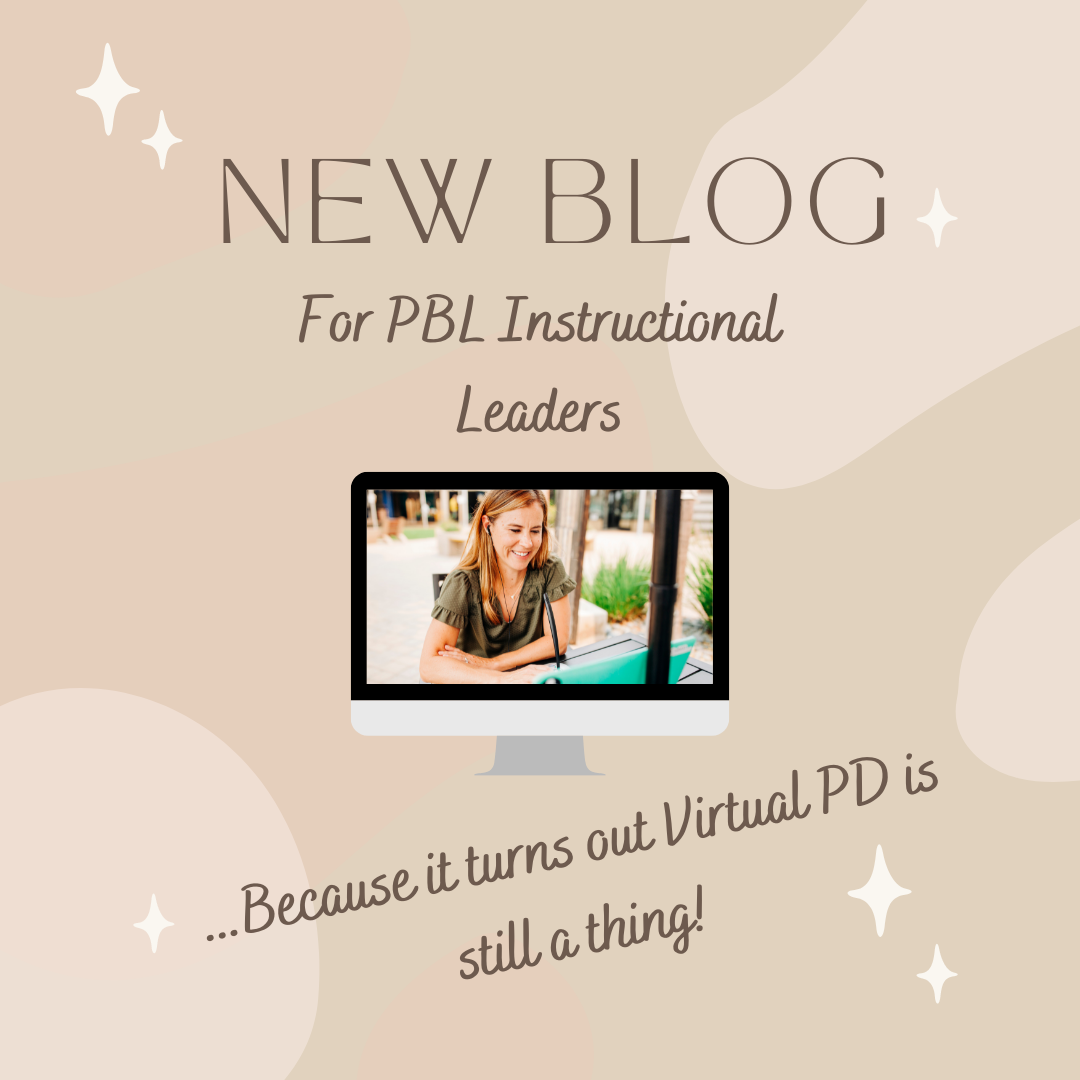Virtual PD: Not just a thing of the past
Why is virtual PD still a thing? As a professional development partner this is a question I find myself pondering, often. After countless spring and summer meetings working with site and district leadership I found myself providing two unique learning opportunities for teachers: one that was onsite and one that was fully virtual. With COVID closures more than two years behind us it was my assumption that nobody would ever willingly return to virtual learning for any age; but I was wrong. When given the choice for introducing staff to Project Based Learning, every leader I met with chose to do it virtually; which left me asking the question: Is Virtual PD here to stay?
As I write this in the Back to School season of 2022 I think my answer is “yes and no”. We all would agree that developing relationships, engagement and traction is challenging in virtual settings, but there are some unique benefits to it, as well. Advantages such as flexibility, convenience, comfort and cost often supersede the drawbacks of dreaded time looking at a screen. And if those benefits continue to outweigh the drawbacks then it is imperative that we consider best practices of this new hybrid approach to professional development.
Challenges of Virtual Learning-for all ages
If you are in education, then I’m preaching to the choir here but let’s recap the two biggest challenges of virtual learning that we have all experienced in the past two years. First, it’s difficult to stay engaged when staring at a screen- or should I say it’s too tempting to multi-task? Muted devices, the option of “calling in” from any location, and the ability to turn off laptop cameras with the click of a button all serve as easy alternatives to fully participating in learning. Related to a lack of engagement comes the challenge of a lack of connection. When learners of any age aren’t connected in meaningful ways an important element of a learning culture is lost. School reform research in the decades prior to COVID taught us that when students feel connected and known they are more likely to perform and achieve in school; and adult learners in a virtual setting are arguably no different.
Benefits that outweigh the disadvantages
Despite the many challenges of virtual learning, specifically professional development for teachers, not all administrators are adverse to it. After many conversations with school leaders it is clear that there was a wide range of experiences, and thus success, with virtual learning during the pandemic that continue to inform the decision of the future. I have concluded that there are three recurring reasons why when given the option of onsite or virtual PD, instructional leaders will often pick the virtual route.
- Virtual PD is more affordable -The school budget is filled with competing demands and balancing acts that require the skills of a magician. When presented with a solution for how to spend a small “use it or lose it” grant funds, or implement two PD initiatives instead of one, school leaders will often pick the cheapest option for PD, even if it isn’t the first choice.
- Virtual PD allows for a bite-sized approach- With a combination of synchronous and asynchronous learning experiences, virtual learning is attractive to teachers and administrators because it feels more manageable than a full day workshop. With so much on their plates right now school leaders know that adding a new initiative to the menu would be met with resistance; therefore offering small, less intensive opportunities for learning is more realistic.
- Virtual PD is flexible– Competing demands of district initiatives, combined with increased student needs, often don’t allow for whole staff days or even minimum days that aren’t filled with putting out fires. With a loss of so much time together in school, time has become our most valuable resource since COVID; making flexibility with time priceless. With virtual PD teachers can often work independently and administrators have more flexibility in when sessions are scheduled.
Best practices of Virtual PD for teachers
In working with schools internationally throughout the past two years, I have collaboratively arrived on the following best practices for leaders who are considering virtual professional development:
- Develop an annual PD plan- It is important to think about a full year of learning grounded in attainable goals. Once landing on these goals, consider when the learning will happen, how teachers will be supported, and then which PD format makes the most sense given these conditions.
- Consider a hybrid format – If you are facing budget and time restrictions and virtual learning feels like the only way to provide PD, then consider a hybrid format that includes ”on the ground” support and collaboration with both synchronous and asynchronous learning experiences. It is imperative that a variety of learning experiences and support are sprinkled throughout the annual PD plan previously mentioned.
- Keep staff collaboration ongoing- Building off the previous two best practices, it is critical that the staff is frequently working toward the PD goals. You may consider engaging and flexible options such as book clubs, common planning times, feedback and brainstorming protocols, asynchronous “chalk talks” and “gallery walks” in the staff room.
- Accountability is more important than ever- The word “accountability” has such a negative connotation to it since No Child Left Behind, but in this case it’s more like collegial accountability. It’s important for teachers to commit to one another and their learning. Mechanisms such as Looking at Student work in the middle of implementation or exhibiting student work at the conclusion of the year are imperative when professional development is happening virtually.
- Ongoing reflection and refinement is critical- Facilitating frequent reflection and improvement on the craft of teaching and learning is a best practice of adult learning that must be present when PD is provided virtually. By encouraging collaborative improvement teachers will become not only more connected and calibrated but also more committed to the work.
Transferring the best practices of successful (in-person) learning communities to virtual settings proved to be an insurmountable challenge for the majority of schools during COVID closures. But if aspects of virtual learning-in particular for adults- is here to stay, then we must find ways to learn from the past to improve the future.

